A NEAL ADAMS CHRONICLES BIRTHDAY SALUTE TO GENE COLAN: The only time Adams inked Colan, who was born 97 years ago on Sept. 1, 1926…
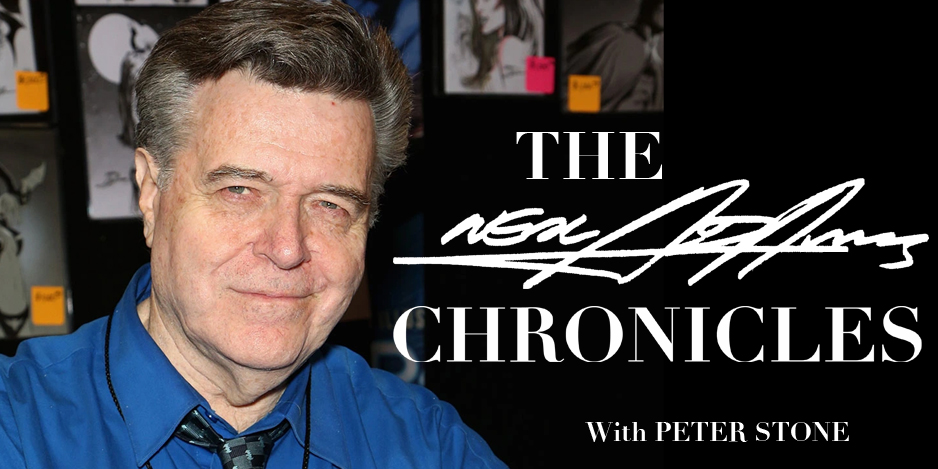
By PETER STONE
Neal Adams grew up working under the shadow of the great Gene Colan despite the fact that Gene started working professionally in 1944, a scant three years after Neal was born. Gene cast a penciled shadow over Neal’s life and work, but never felt like a threat to Neal. Gene’s work was different, unique, stylistic yet somehow hauntingly realistic while Neal struggled to become as realistic as possible.
Neal’s influences were along the lines of Stan Drake, Norman Rockwell, Hal Foster, Joe Kubert, Russ Heath, Russ Manning and even Bob Peak. Gene Colan seemed to spring from the very mind of Zeus himself. It was Gene’s realism that attracted Neal to his work. Neal would always buy a Gene Colan comic when it hit the stands. From Sub-Mariner, Iron Man, Captain America and Dr. Strange to the signature titles, Tomb of Dracula and Daredevil.
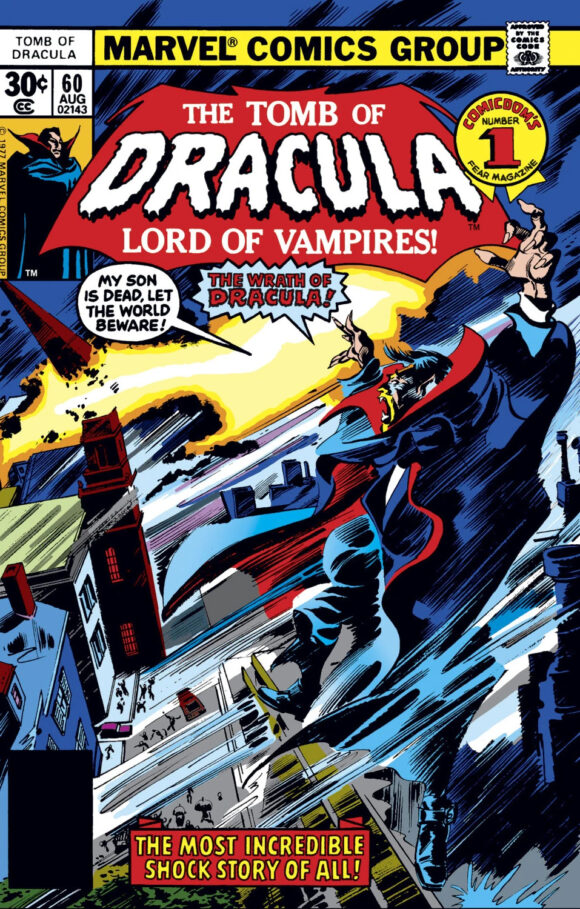
Gene was so connected to Dracula that about 20 years after the Marvel series ended, in 1998, Gene drew a younger, sexier blood-sucker with his old writing partner in vampirism, Marv Wolfman, for Dark Horse called The Curse of Dracula. He’d also drawn a Predator series for Dark Horse called Hell & Hot Water, and both series were in a similar artistic vein as the four-issue Nathaniel Dusk series he did in the ’80s for DC — a vein that coursed fiercely with the absolutely brilliant idea to print Gene’s work in pencil.
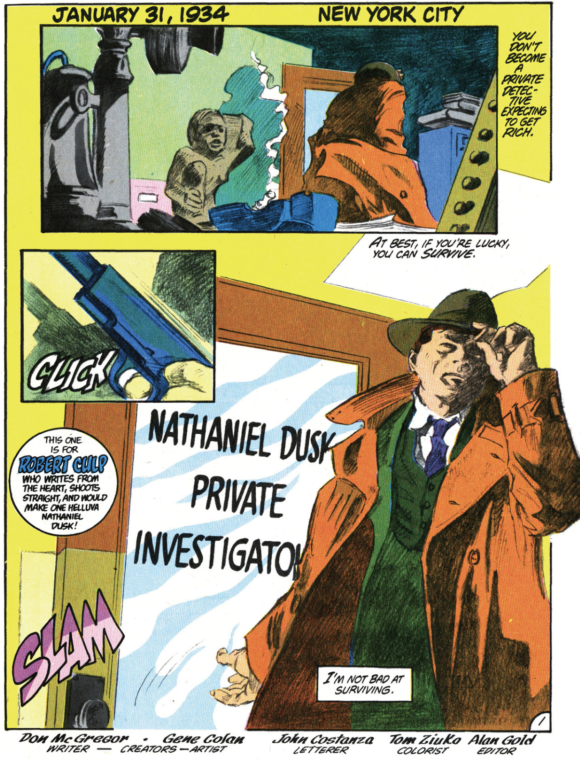
Nathaniel Dusk #1
Neal generally believed that a true comic book was black and white; India ink was VITAL to a REAL comic book. Gene Colan was a little different because there was NO ONE who could ink Gene Colan correctly. Neal recognized that Gene used models and Colan even admitted it. He claimed he used his lawn boy as the model for his younger Dracula. Neal, after saying no one could ink Gene correctly, would segue into the concept that he, Neal F’ing Adams, was the ONLY one who could ink Gene Colan correctly. Only he understood that Gene was inherently a realist despite what people may think. Many fans viewed Gene Colan as a stylist, but Neal saw through the pencils to the photos that Gene was using. Neal, having started his career tracing himself and his family for the Ben Casey comic strip, saw a way to ink Gene in such a way that would make his pages into works of art.
To that end, when Neal was searching around for artists for his burgeoning comic book company, Continuity, he had a list in his head of the professional artists he wanted. Jose Luis Garcia-Lopez, Brian Bolland, Richard Corben, a young Mark Silvestri and Gene Colan were just a few. There was a rumor going around that Gene was looking for a new company to work at where he would receive nice benefits like medical. Neal always felt that an artist should be able to protect his family medically. So, Neal called his medical insurance company and came up with the best offer they could make. Then we (Neal and I) talked about what Gene would draw because, well to be honest, his style was nothing like Neal’s. It didn’t matter because Neal was jonesing to ink Gene Colan. He was just DYING to INK GENE COLAN.
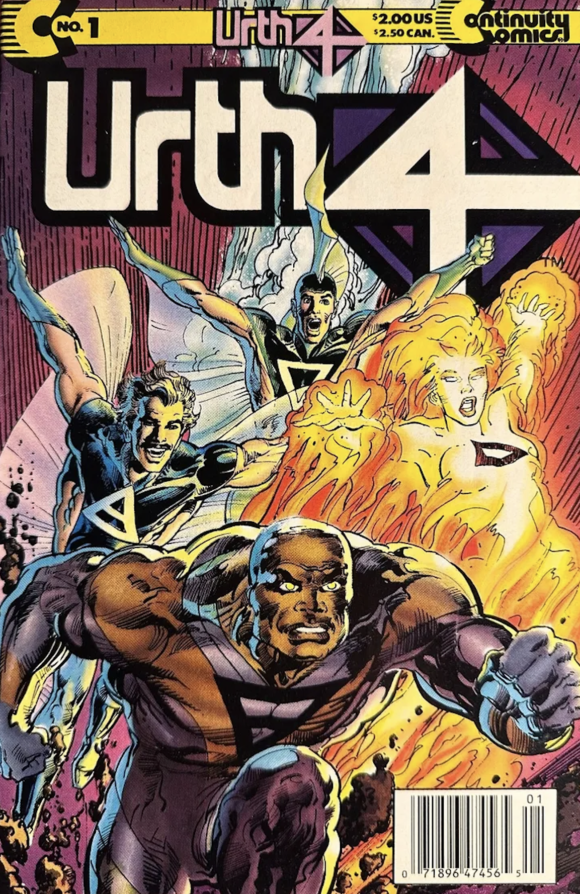
Step Two was the title. Neal and I sat in the conference room, working on a spin-off title from Ms. Mystic called Urth 4. It had a theme of “saving the environment” much like Ms. Mystic but it was a group book with Urth, Ayre, Fyre and Watr — Elementals. Originally their name was going to be the Basics, but Urth 4 it was. I wrote up the breakdowns and we pulled all sorts of photo reference for it.
Step Three was ”make the call.” Neal called Gene personally and made him the offer. It felt a lot like Nike trying to get Michael Jordan… no chance in hell, right? However, when two artists get together and just TALK, amazing things can happen. Both of these icons respected each other tremendously, but well, they also had egos. It must be nice to have Neal himself call and ask for your work. That’s got to be a trip, right?
When Neal hung up, he grinned like a little boy, saying, “He’ll do it! We just got Gene Colan.” We could not have been happier. I packed up the script, reference and a personal letter from Neal and off it went to Gene.
However, at the next convention (which were much, much smaller in the ’80s) Neal and Gene had a long conversation away from the fans. There was laughter and looks of grim seriousness. After a bit, Gene returned to his table and continued signing for fans while Neal returned to the rest of us. He did not look happy. Sure enough, life did not imitate art. The monster with a lot of money and an even better medical plan had lured Michael Jordan away from Nike. Gene Colan was signing with DC Comics.
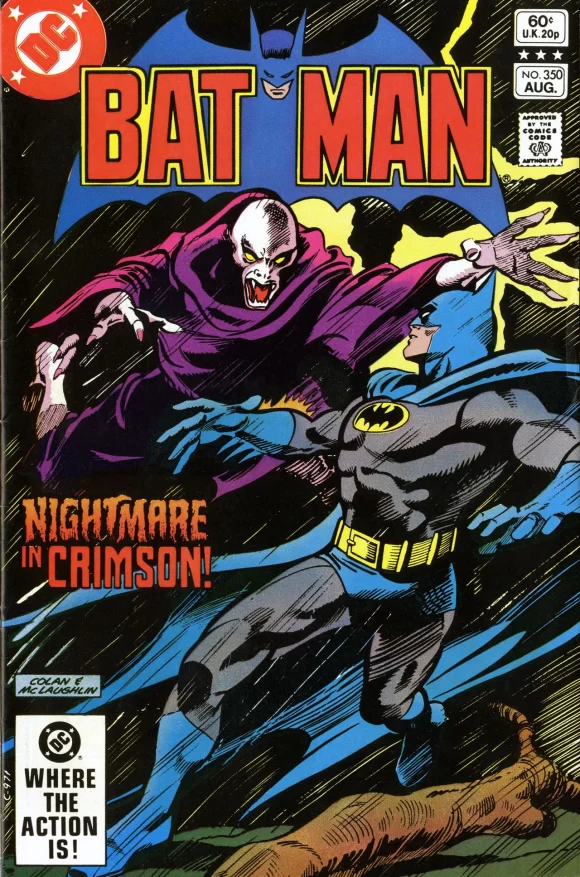
Fair enough. We all understood. DC was a huge company that employed enough people to justify a really, really, good medical plan. We were just a small start-up trying to put out good comics. Gene had to take care of himself and his family… even if he broke Neal’s artistic heart.
Neal, and the rest of us, got over it. We got to work with Trevor Von Eeden, Mark Beachum, Larry Stroman, Michael Golden, Clarke Hawbaker, Stan Drake, Dan Barry, Brian Bolland (inking Neal’s Crazyman cover), Rudy Nebres, Ernesto Infante and many more. Not bad, but Neal still had the itch to ink Gene Colan.
That’s not the end of the story.
***
Decades later, after Gene had died, Neal discovered that an employee had bought a few pages of Gene Colan’s last comic story, 2009’s Captain America #601. Reproduced in pencil. Now, this employee brought them to work to show them to Neal since he knew Neal loved Gene’s work. Neal looked over them for a while and then asked if there were more pages from this story out there. That employee (Rich Cirillo) started collecting scans of the other pages of the story.

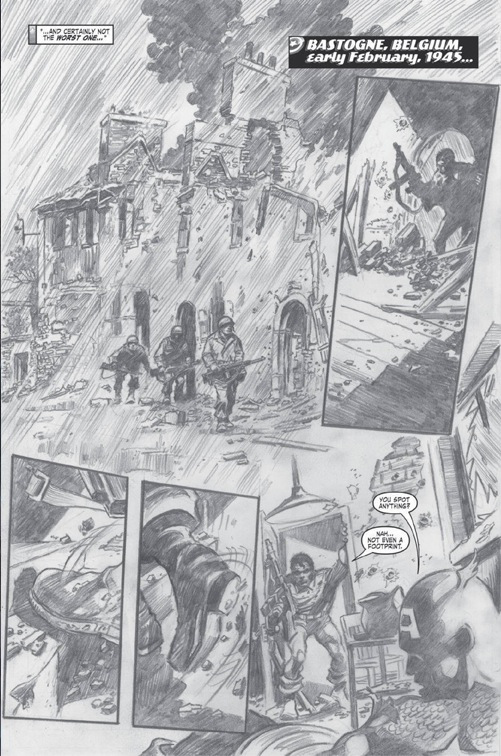
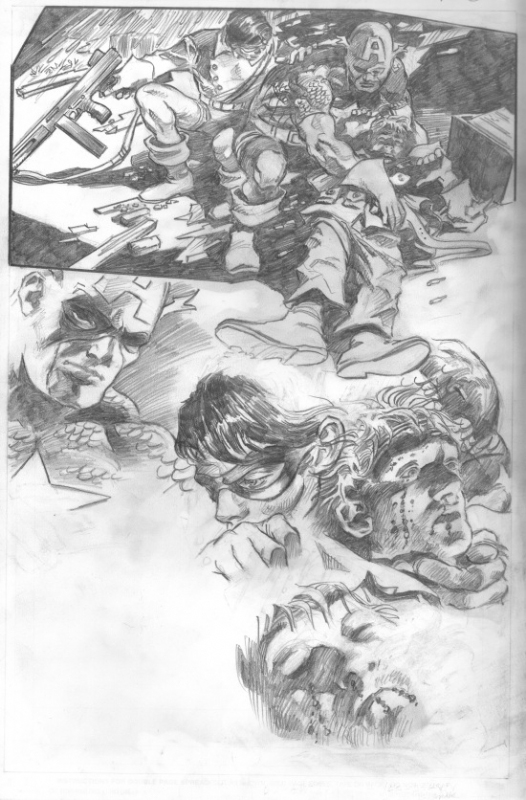
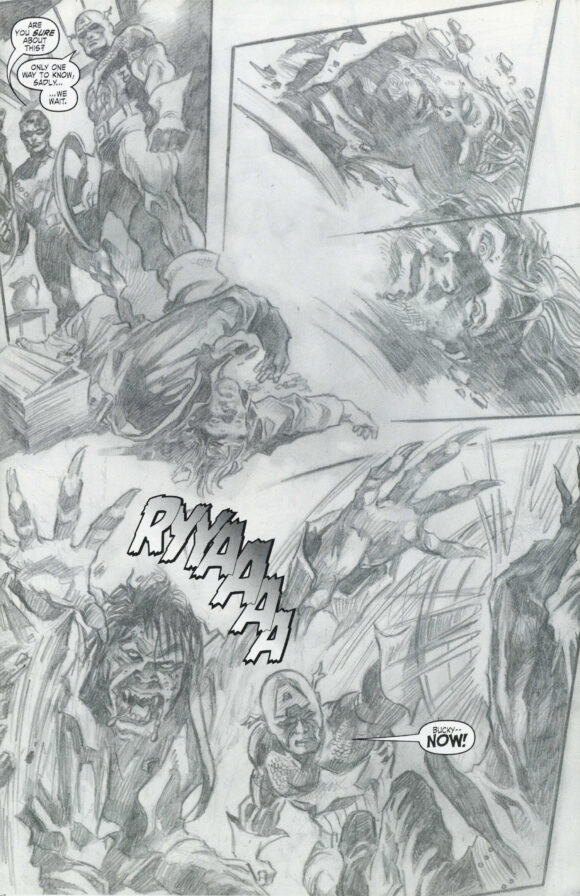
Then Neal told me to change the images to a non-reproductive blue in Photoshop and then print them out on Joe Kubert-brand comic paper. He then had pages of Gene Colan (Captain America no less) on professional comic book pages. Albeit blue, the pencils had been reproduced perfectly… especially since Neal oversaw the entire production. “Lighten this page, darken this page” were phrases I constantly heard.
Then he pulled out a fresh Kuretake brush pen and started to ink. Every day for weeks Neal would come in with newly inked sections of the pages he carried with him at all times. If you were lucky enough, Neal would pontificate about Gene’s work, showing off how he handled this panel or how he enlarged Cap’s shield just a bit so it worked better. One of the best parts of the story was that it featured soldiers transforming into vampires. Neal got to ink Gene’s Captain America and vampires in the same story! He was so happy.
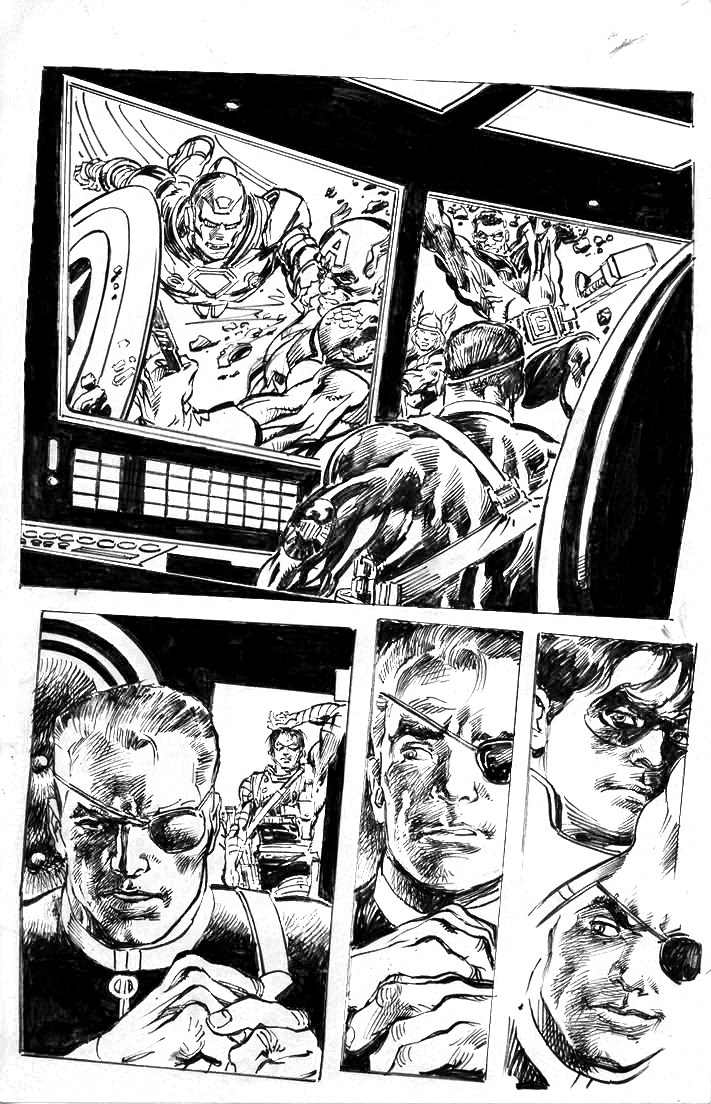
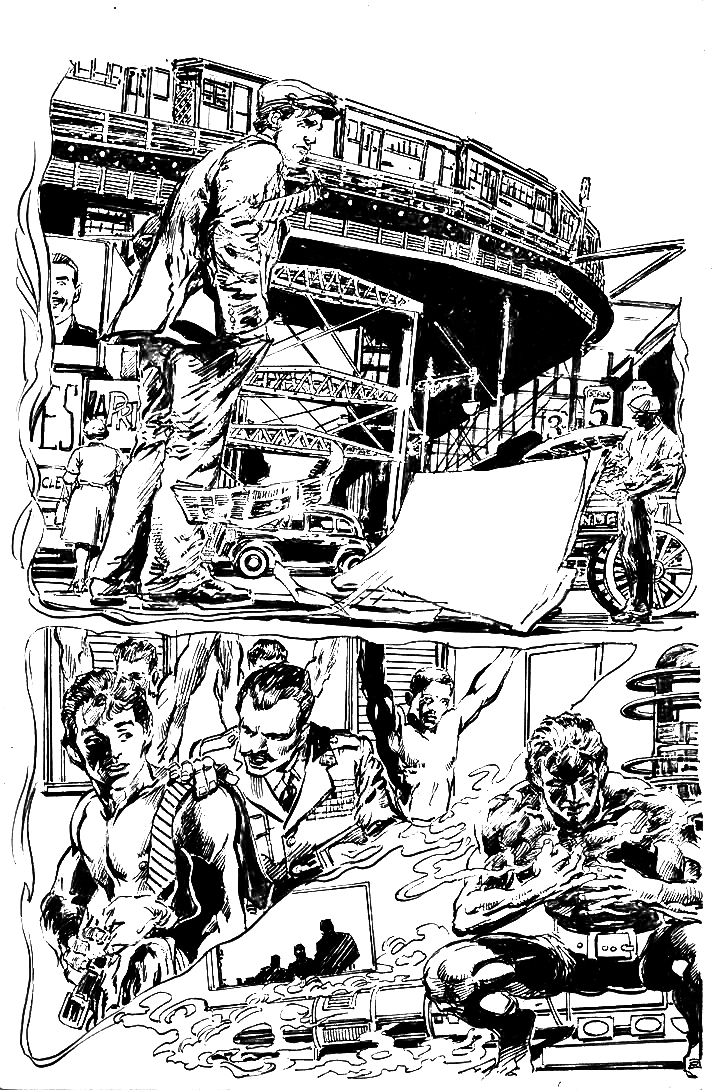
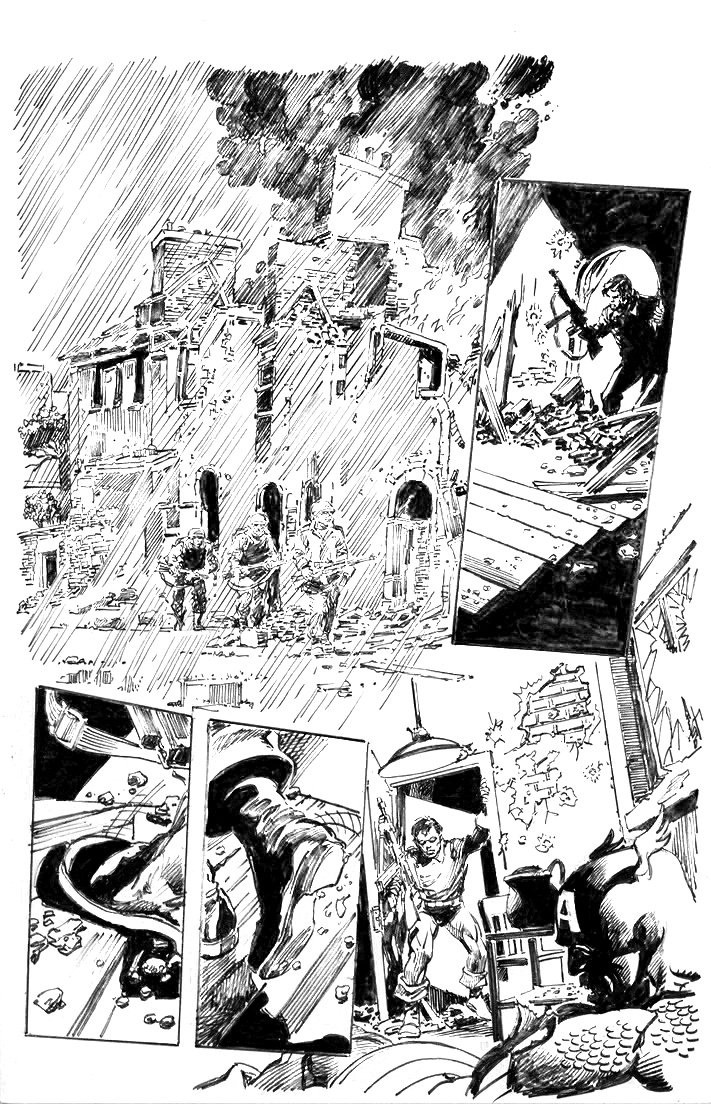
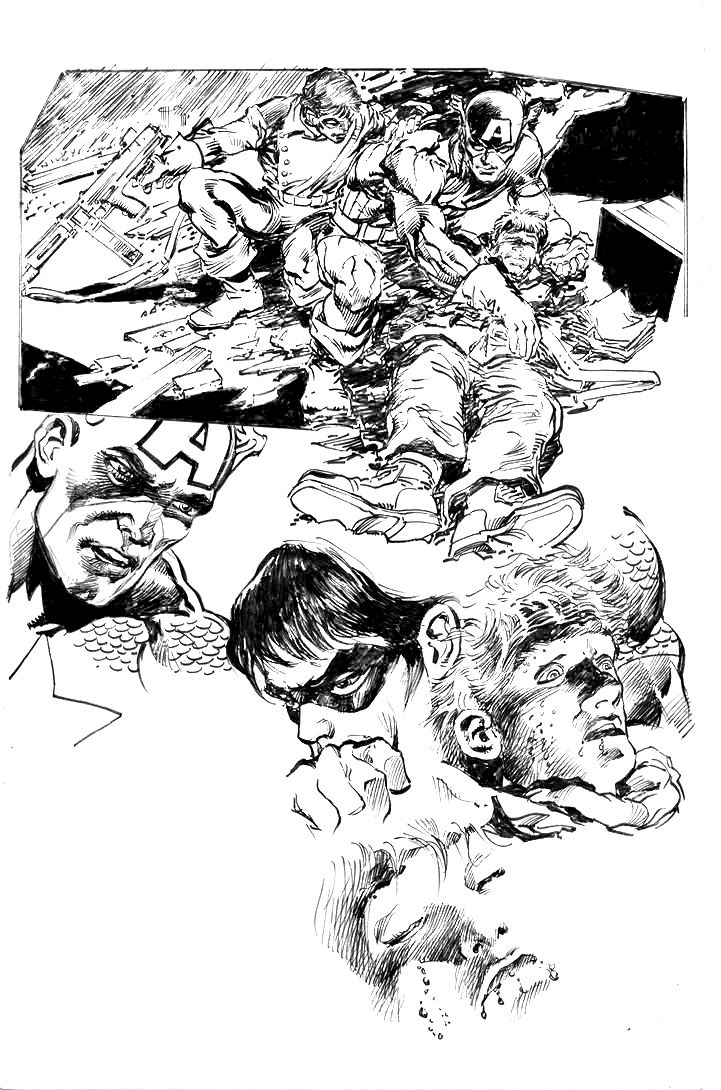
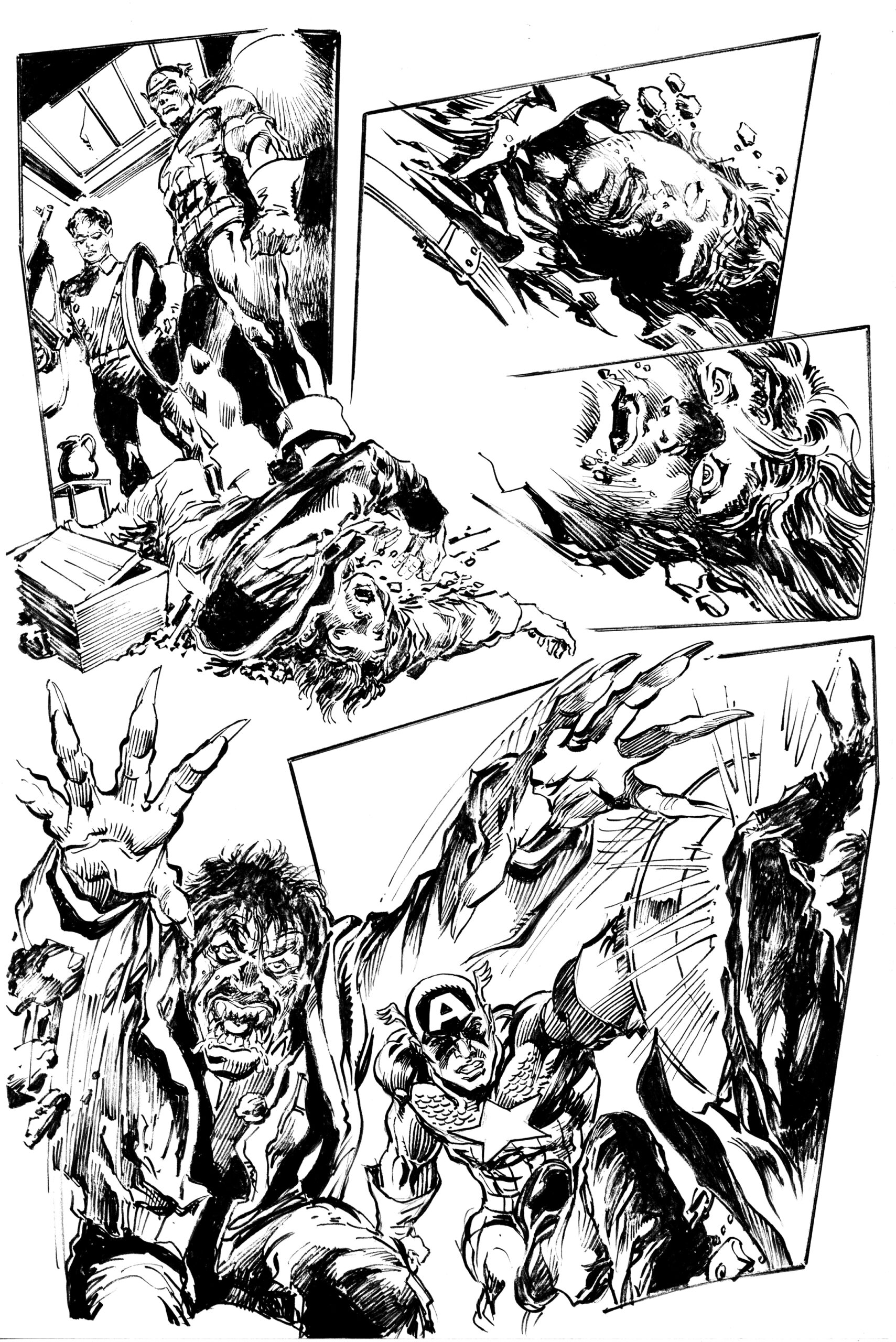
Since he now had an online show through Facebook and Instagram twice a week, Neal would show off his pages and talk about his love of Gene Colan. So happy was he with the finished pages, Neal instructed his daughter Kris to get Joe Quesada on the phone. Neal offered Marvel and Quesada the story, now inked by Neal but Marvel had moved on from where Cap was when Gene drew it. Joe loved seeing the art, but Marvel just couldn’t reprint a story that was far away from where the character was today.
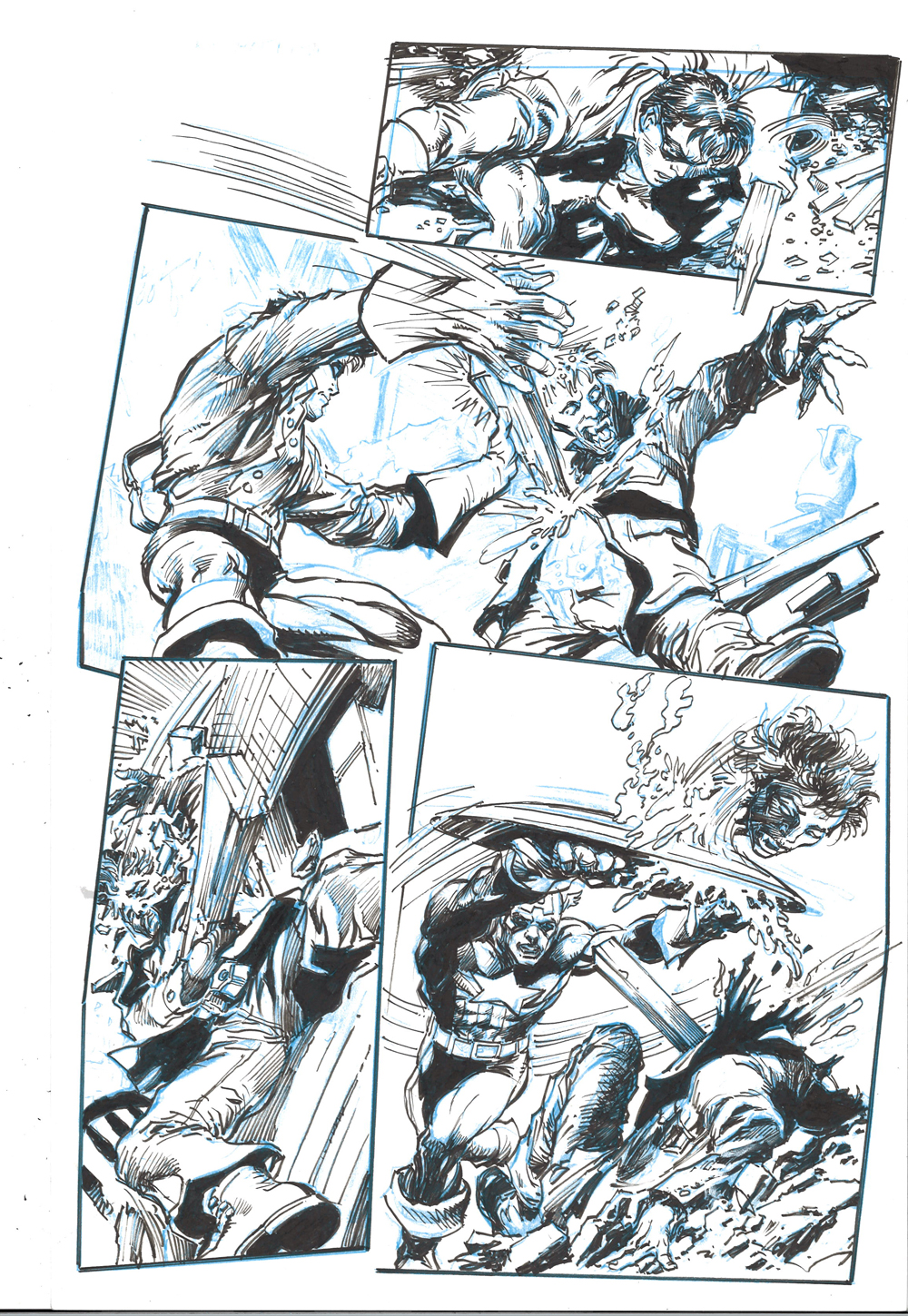
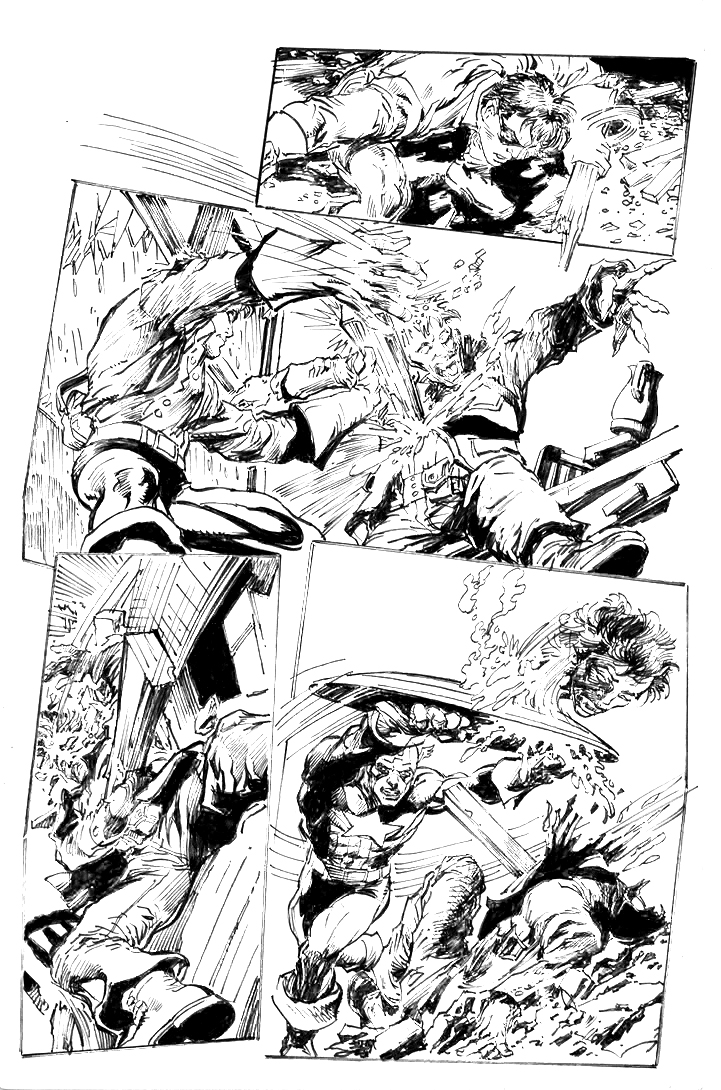
Never one to be stopped in his quest to make money on his hard work (and to show off his inking skills), Neal used his online show to offer the pages for sale. Every page that was sold was scanned so that they would never be lost. Maybe someday Marvel will change their mind and print Gene Colan and Neal Adams on the same story for the ONLY TIME IN HISTORY! In the end, Neal sold most of the pages to lucky fans as he continued to ink the remaining pages.
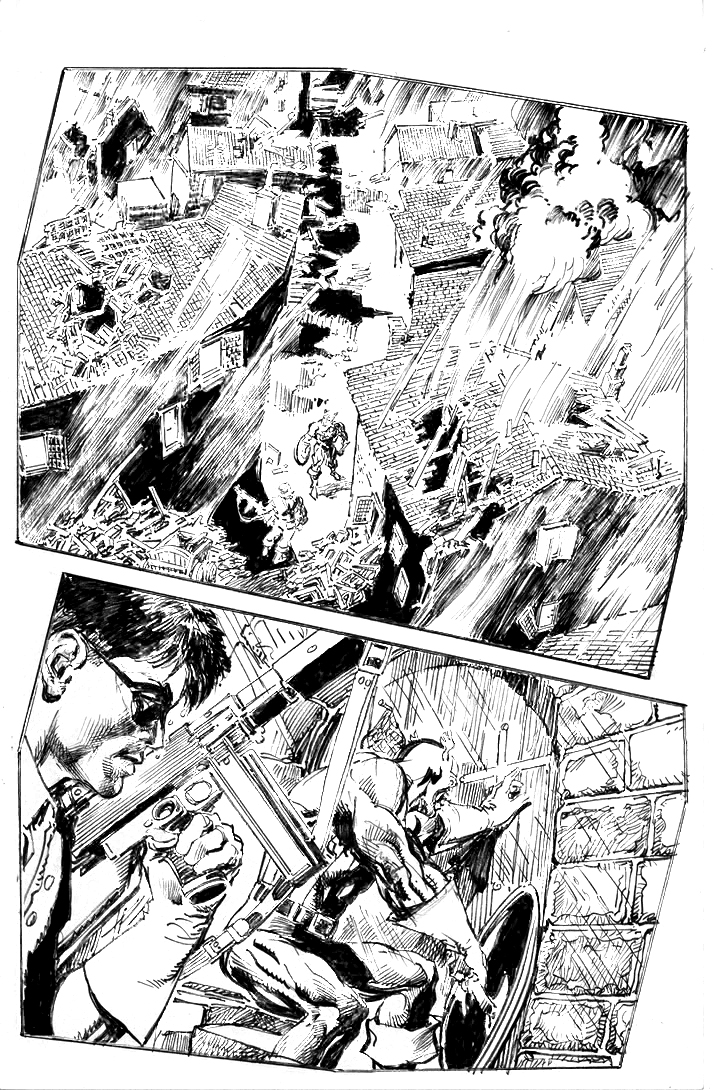

Unfortunately, finishing the story was not to be. An unknown infection caused sepsis in Neal’s blood and body and I’m afraid that was the beginning of the end. However, Neal said to me once in the 2010s that he had done everything and more that he had ever wanted to do. One of those things on Neal’s bucket list was to ink the great Gene Colan, one of the great visualists in comics history. Neal and Gene were both happy telling the fictional histories of so many heroes and villains.
Personally, my favorite Gene Colan story is 1968’s Daredevil #47 by Colan, Stan Lee and inker George Klein. Daredevil swings like a gymnast in a tenement staircase and appears in Vietnam to cheer up the troops where there is a G.I. blinded in combat. It just looks great and every time I see that story, I’m brought right back to being a comic-obsessed kid who thought that issue was totally awesome.
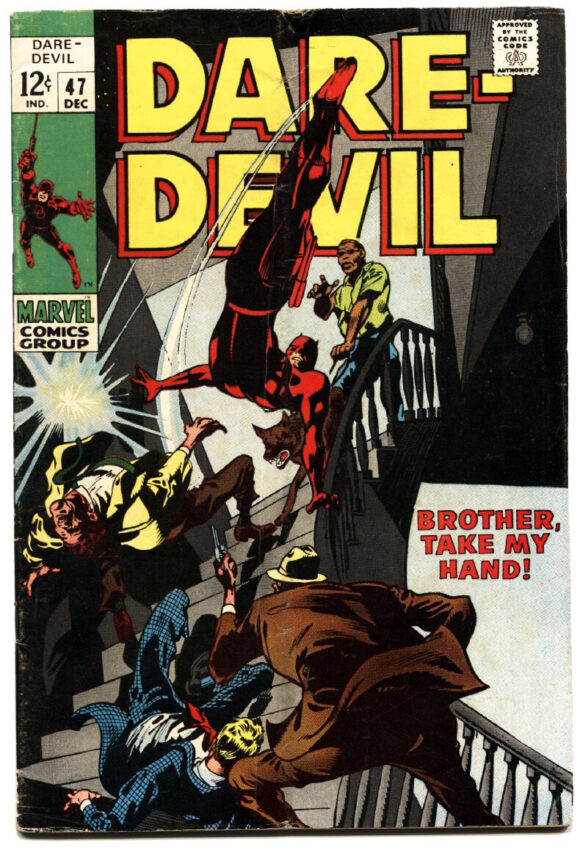
I firmly believe Gene would have liked what Neal did with his pencils, even if it was never printed. Neal was very happy with the final results. I think if Marvel did go for Neal’s embellished version of Captain America #601, he would not have stopped with the inks. I think he would have colored it too.
—
MORE
— THE NEAL ADAMS CHRONICLES: Mapping Out NEAL ADAMS’ Enduring Respect and Admiration for JACK KIRBY. Click here.
— THE NEAL ADAMS CHRONICLES: Why the Great Artist Had Such Respect for Writer BOB HANEY. Click here.
—
Peter Stone is a writer and son-in-law of the late Neal Adams. Be sure to check out the family’s twice-weekly online Facebook auctions, as well as the NealAdamsStore.com, and their Burbank, California, comics shop Crusty Bunkers Comics and Toys.

September 1, 2023
Interesting story, but I don’t think Adams’s inks suit Colan’s pencils at all.
September 1, 2023
Neal’s inking is too sketchy looking. What about an Alex Ross?
September 2, 2023
Except did ink Colan on Howard the Duck #11. I’m not sure how many pages he inked but basically inker Steve Leialoha had him with him when he came to Continuity and Neal wanted to try his hand at inking Howard and who was Steve to say no to the master. Others worked on that issue as well.
September 3, 2023
The challenging step is removing the blue lines after the inking is completed and not losing the ink lines that were there on the blueline scans. Tricky case of both threshold leveling but also magic wand color removal. I understand these are low-res files but those blue-less scans feel so airy and sketchy so as to lose the impact, power, definition that Neal would have brought to the work. Adding color would help define elements but when it comes to Gene I find the best work to be b&w to capture all of his tones.